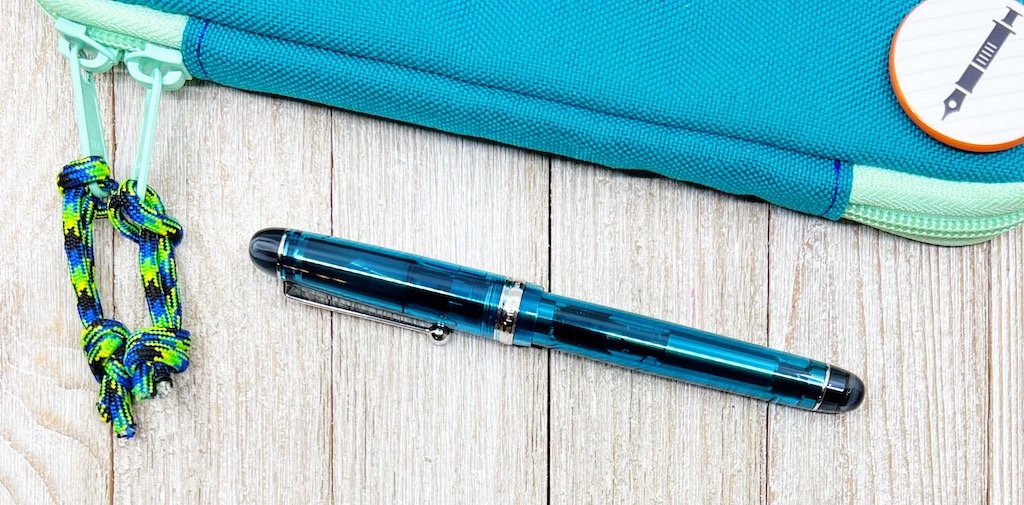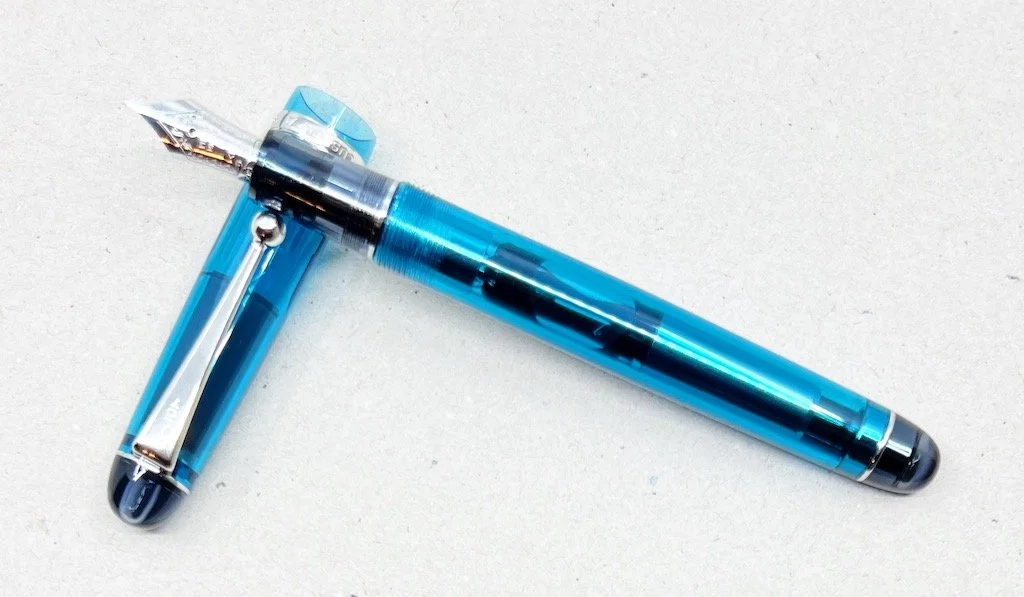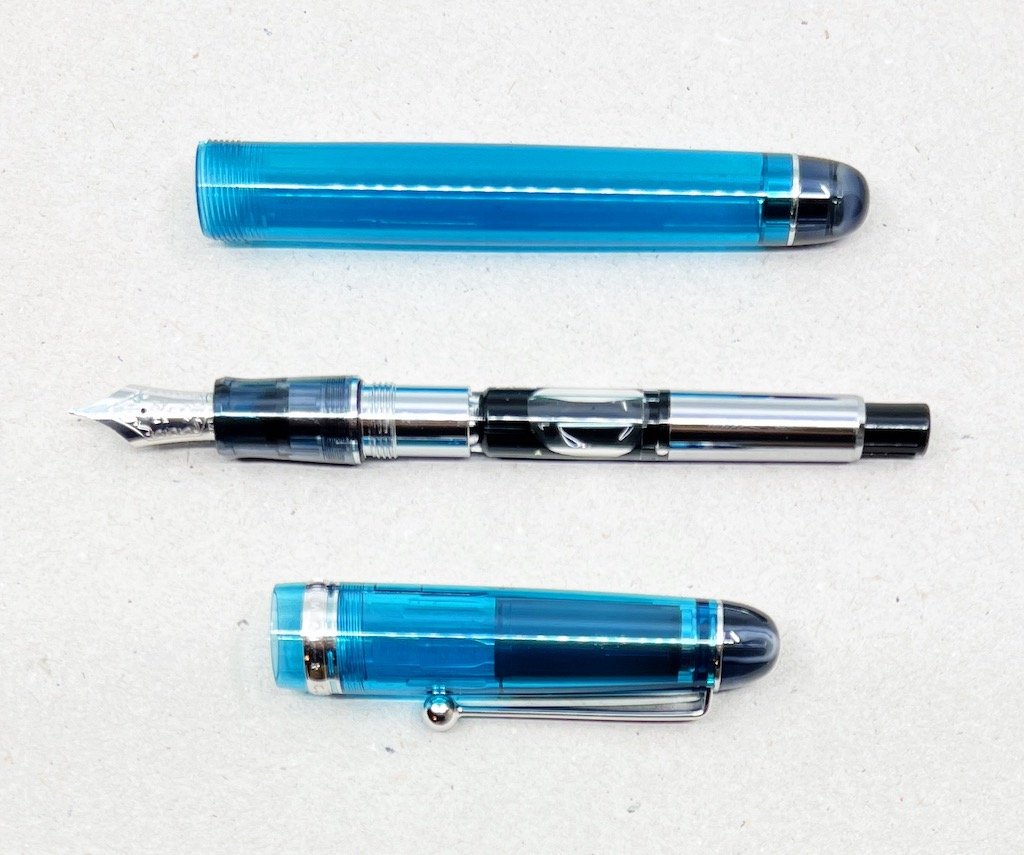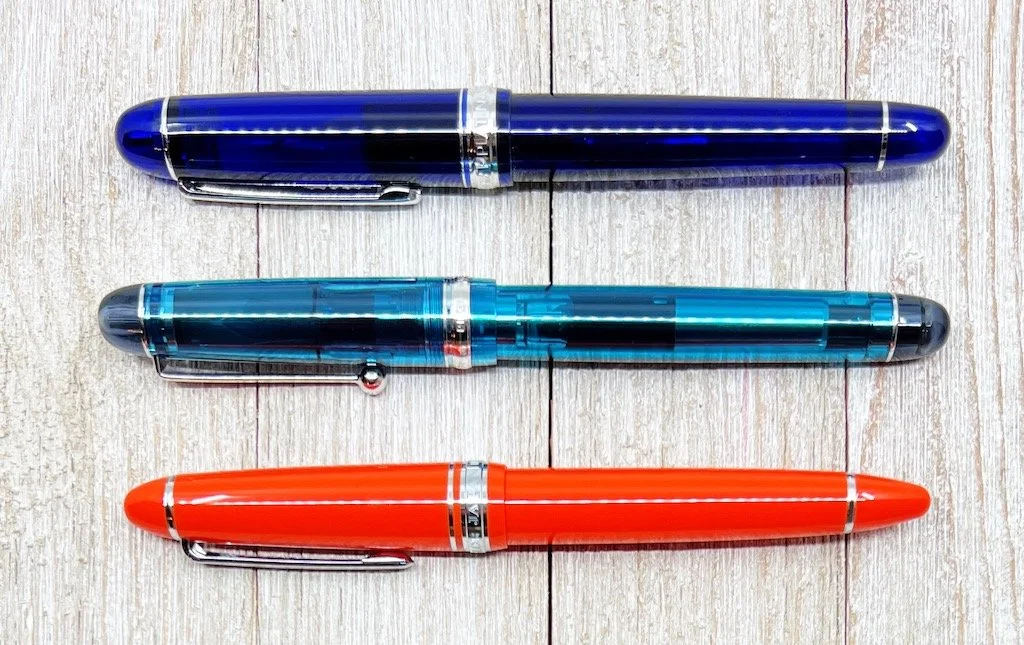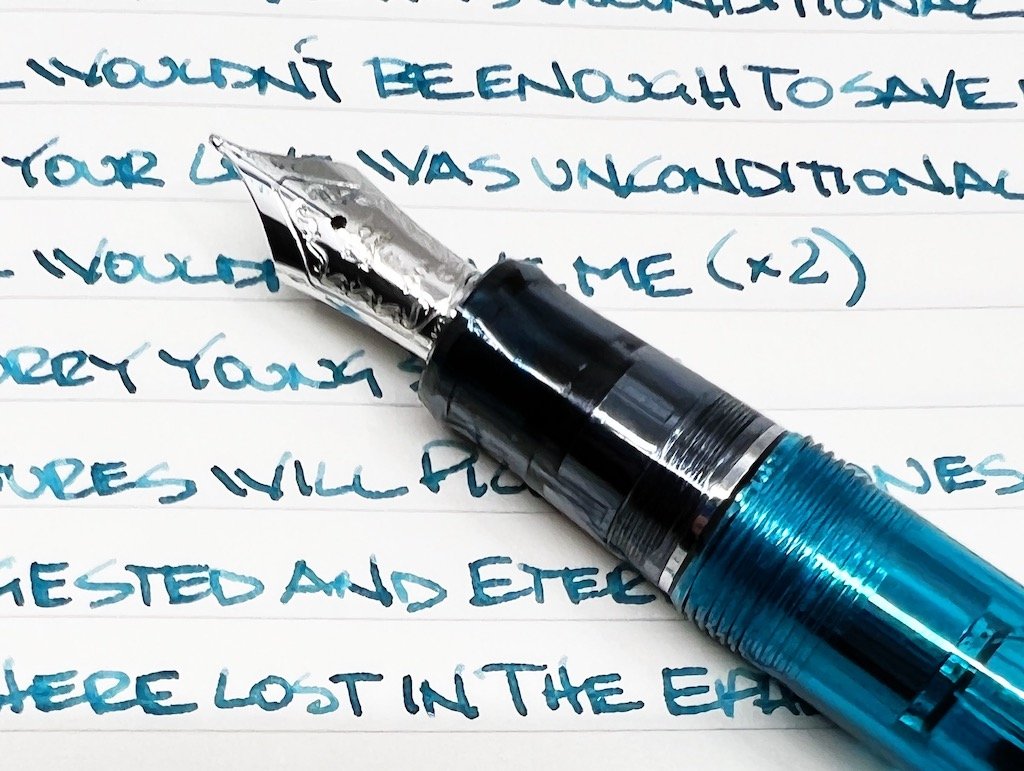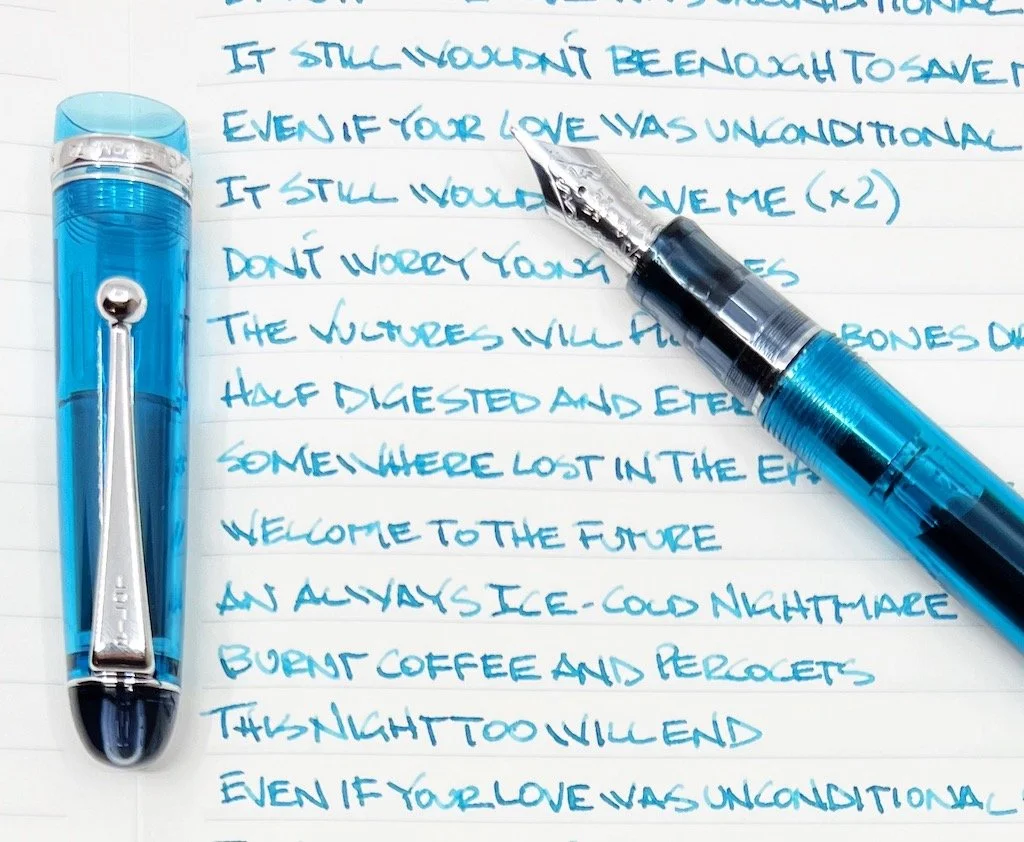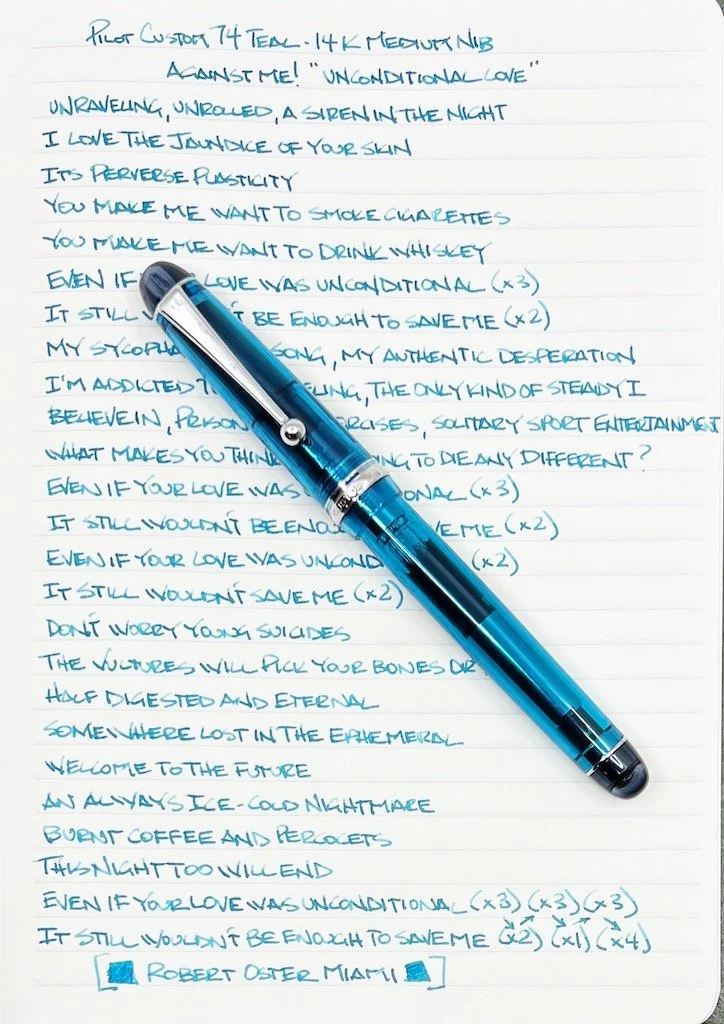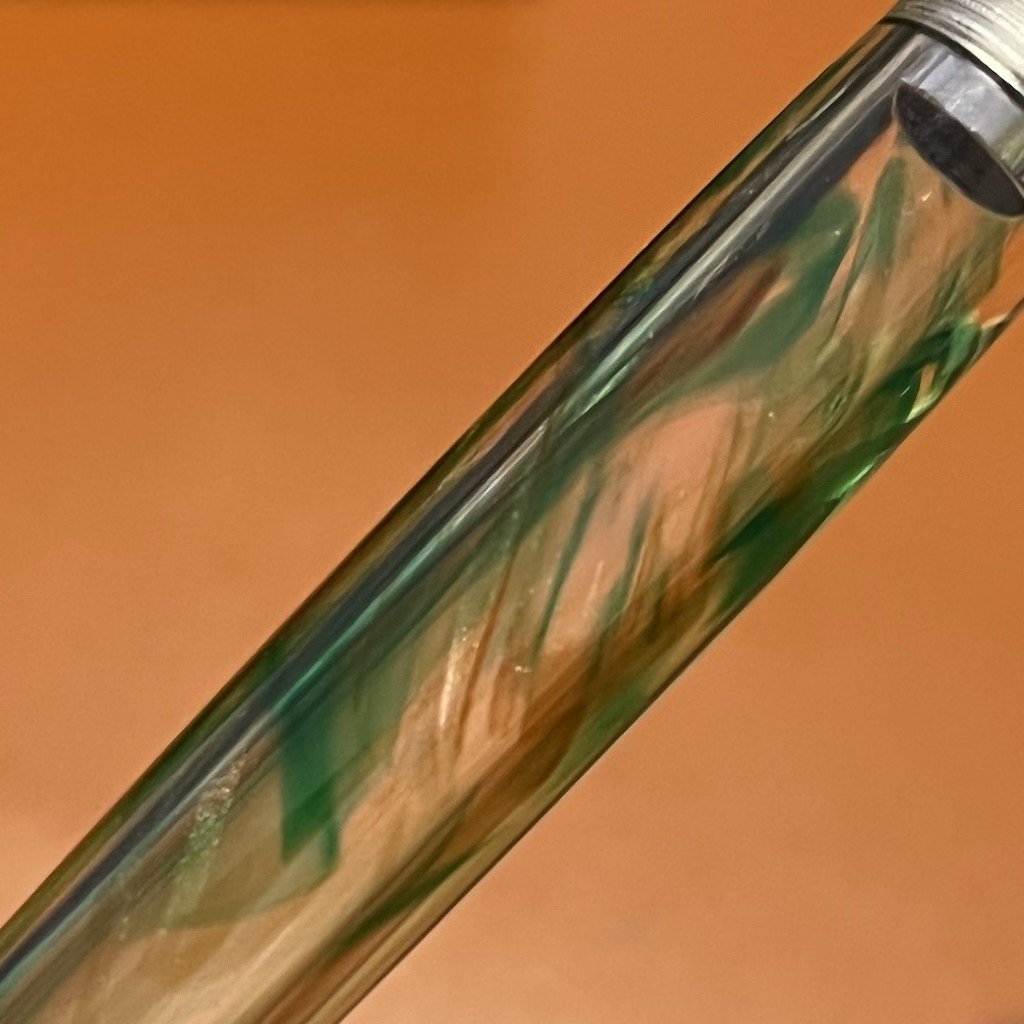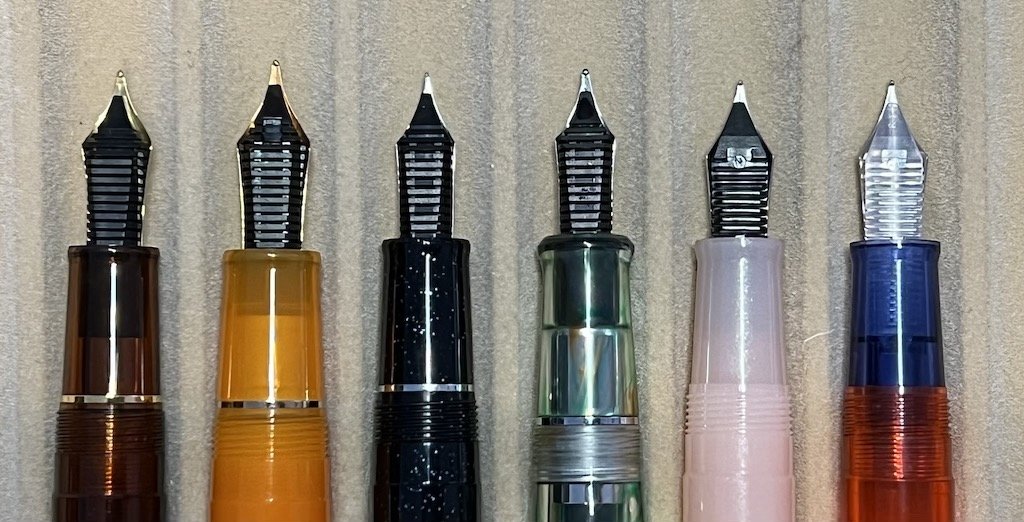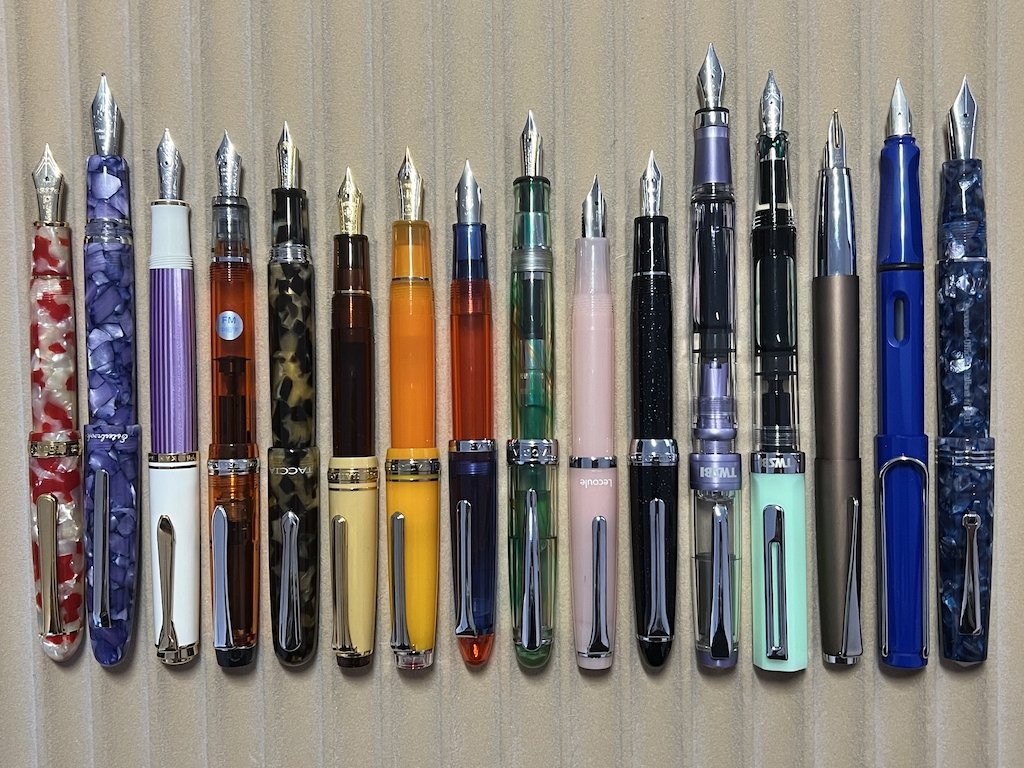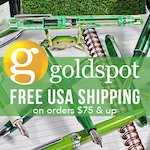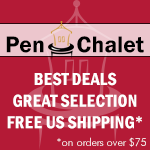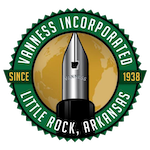(The is a guest post by Andrew Coon. You can find more of Andrew’s fountain pen favorites on Instagram.)
I am always on the lookout for new makers. New shapes, new nibs, new materials, I get excited for all of these. Thus, when I saw a Kickstarter announced by Tuduriya (Instagram), I reached out to thank the maker for bringing this pen to market. The artist behind the brand is Takayuki Suzuki, and what caught my attention as I looked at the Kickstarter he had put together was the number of iterations that had gone into this final product. It is impressive to see how this model has developed. The subtle changes have added up to one very impressive pen.
The base model pen comes in 7 different materials (full details can be found on the Kickstarter page) for the section - all ebonite and all matched to a black ebonite cap and a black ebonite body. Further options include sections that are ishime, burl wood, layered urushi, and a pen that is entirely made of Calabrian briar wood. The two pens that I have for this review are the base model, with two different types of ebonite. The beige and black swirl is nice, but the red and black swirl really grabs my attention. The red and black are classic colors for ebonite, and polished to a mirror gleam.
Comparison vs. Sailor 1911L (top) and Pilot Metropolitan.
This pen appears to be longer than it is, as it measures 14.9 mm uncapped, 15.2 mm capped. In comparison to other pens, it is about the same length as a Conid Kingsize, or a Pro Gear King of Pen. It is not much longer than a Pilot Metropolitan. There is a subtle narrowing of the barrel, as it goes from 12.6 mm to 12.2 mm at the end of the pen. This is hard to tell with the naked eye. The section is a very subtly pinched shape, which is 12.3 mm at the thinnest. A Parker 51 has a section that is 9 to 10 mm (depending on where you hold it). So in addition to not being as long as it looks, it isn’t as thin as it looks, either. Not being a fan of vintage pens due to their slender sections, I was worried whether this pen would work out for me. I was wrong to worry, and am very glad to have been wrong. Overall, the shape is very comfortable for me. I like big pens, and this isn’t too thin for my taste, nor is it too long to carry in a pen sleeve as an EDC.
The polish is immaculate, the threading is well done. Being able to hold two of them, I can tell that there is a consistency in production of these pens. The way the edges are crisp and smooth, this is a well-made writing instrument. The name of the brand, Tuduriya, is engraved into the ebonite along the top of the cap, and is both well done and very tasteful. This is the right amount of branding – enough to be clear without getting in the way of the overall design. I applaud the maker’s restraint in this.
This is a Cartridge/Converter pen, and works well as such. I did use a touch of silicone and eyedroppered one of the pens, and set up like that it holds 5 ml of ink. I love a pen that uncaps quickly, and this uncaps in one turn. The nib that is underneath? A Bock steel 250 in a gold finish. It is just like any other Bock. But you can swap in something more interesting, which is what I did. I swapped in a stacked nib into the pen that was eyedroppered, and it has been a sweet combination.
If you would like, the maker can do a nib upgrade for you. A gold Bock is available, but the really interesting option is the ability to go with a nib from a well known Asian pen maker. Let me say that I am very excited to have a Pilot PO (aka Posting) nib in a pen that is both comfortable and more visually interesting than what that nib usually comes in.
What is there to critique? When filling from a bottle, the threads will be in the ink which could bother people. I make sure to wipe them off, so it doesn’t bother me. One of the two Bock nibs needed to be tuned out of the box. This is not a surprise for a Bock nib. If is sounds like I am reaching, I am. This is a great pen.
The base model runs approximately $225, depending on exchange rate, which makes this a great value. This is about as low as a hand made pen can cost. With the upgraded nib, this pen is a unique option. And as an ebonite pen without a clip, this is a prime candidate for urushi work.
I am excited for people to be able to enjoy these pens, and look forward to what this brand does next.
(The pens in this review were provided by Tuduriya at no charge for purposes of this review.)
Enjoy reading The Pen Addict? Then consider becoming a member to receive additional weekly content, giveaways, and discounts in The Pen Addict shop. Plus, you support me and the site directly, for which I am very grateful.
Membership starts at just $5/month, with a discounted annual option available. To find out more about membership click here and join us!






